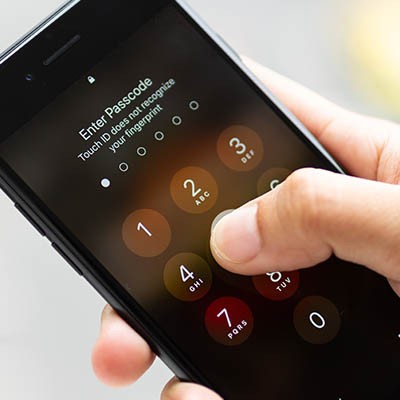Poweron Technology Blog
Each year, we take some time and take a look at the most interesting new smartphones that are being released. Over the past few years, fewer companies are making smartphones and throughout the whole industry, innovation has seemed to slow. Whether this is a result of rigid market dynamics, supply shortages, or the extraordinary costs it takes to manufacture and source components, it has taken some of the largest technology companies in the world—such as Amazon, LG, and HTC—out of the market and presented limited opportunities for other global technology leaders such as Microsoft, Sony, and Nokia.
Have you ever struggled with storage space on your Android device? For individuals who have, we bet that downloading applications that you ultimately don’t end up using very often is a major culprit here. To help you clear up storage space on your device, Android will receive an auto-archiving feature that can save you significant amounts of storage space by archiving your unused applications.
Technology gets better and more efficient over time, and smartphones are one of today’s standout examples. Although their growth has stagnated a bit in recent years, it’s no small thing to say that smartphone innovation has really taken off, offering extremely fast processors, data storage in the cloud, and so much more. Let’s go over what you might look at when you purchase a new smartphone.
You often hear about malware that infects desktop PCs, laptops, or servers, but other types of malware that infect mobile devices also exist. One such malware, a threat called TangleBot, has been discovered, and it can become seriously problematic for both workers and consumers utilizing Android devices—especially in today’s mobile-centric workplace.
With smartphones becoming more expensive every year, the top offerings from major manufacturers price some out of the market. This provides an opportunity for these companies to offer budget smartphones to a growing market of people who don’t want to drop a $1,000 on a new phone. Today, we discuss options from Samsung, Google, and Apple that can be had for a fraction of the cost of today’s flagship smartphones.
In last week’s blog we took a brief look at the best phones money can buy. This week we take a look at some devices that cost more than the flagship devices and don’t necessarily have the specs that back up the price. These devices, however, have something else: an innovative new twist or two. Let’s take a look at some of the most innovative new devices that you can find on the market right now.
The average person checks their phone 58 times a day. With so much use, many users want to know that they have a powerful smartphone that will give them the best chance of having the proper tool when they need it. The flagship smartphones—being the best devices each manufacturer releases each year—typically give users all the bells and whistles they need to be successful. Let’s take a look at some of the top smartphones available right now.
If you were given the task to look up a phone number, call a business, and navigate to the new-to-you area, would you be able to without your smartphone? For some of us the answer will still be yes, for a vast majority, the answer is no. Smartphones have quickly transitioned from a calling device, to one of our most valuable tools. Shopping, navigating, video streaming, and an unbelievable amount of other capabilities are all at the palm of your hand.
Mobile devices accompany us more or less everywhere, leading us to use them more and more frequently in all aspects of lie, including for business purposes. As a result, cybercriminals have even more motivation to target them. To help you avoid a mobile device being the downfall of your company’s security, we’ve assembled a few practices you and your staff should adopt.
No doubt you’ve noticed the increased use of smartphones. No matter where you go, people are on their phones. Sometimes they are using them in places you wouldn’t even imagine. For the modern business, employee smartphone usage can be a major pain in the side. Today, we’ll go into how smartphone usage helps and hurts a business and how to go about keeping employees from being on their phones for large chunks of the workday.
Anyone that has used a computer is familiar with the following scenario. A friend tells you a story about an app that is really useful or fun so you take a chance and download it. After you download and fire it up, you get a pop up asking if you want to allow notifications from that app. You blast “yes” just to get to the application and sometime later, you are asleep or working and you get a notification from the company behind the app you downloaded. Then you get another one, and another, and since you’ve blasted “yes” on 25 little pop-ups, you are getting a constant flow of notifications that you could completely do without.
Even though no one will admit to it themselves, everyone knows that person that, for some reason or another, has dropped his/her smartphone in the toilet, or into the sink, or into a puddle. Needless to say that dropping electronics into any bit of water isn’t typically recommended, but today we will talk about what to do if this happens to you.
One of the major aspects of smartphones is how portable they are. Thanks to them, business professionals can be productive while out of the office, no matter where they are. Unfortunately, this also means that they have more of an opportunity to lose their devices, along with the data they contain. If the device is Android-based, then you can alleviate this trouble thanks to built-in features that can help you find it.
Today the smartphone camera has become one of the biggest selling points when consumers look to purchase a new phone. This is largely because it is crucial to the use of many of the applications that your average user uses the smartphone for. It just goes to show that in less than two decades how much utility the phone has than it did when the Samsung SCH-V200 first offered users the option of taking pictures with their phone.
You may have heard the term augmented reality, but you may be surprised to learn just how much A.R. you already use in your life. For the majority of people who use a smartphone, A.R. applications (like a camera app) are already used en masse. Today, we’ll take a look at augmented reality and how it is going to be used in the future.




















